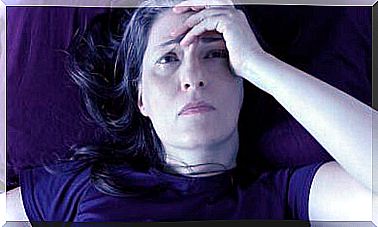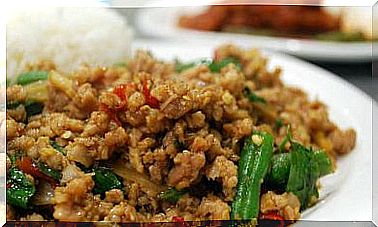How To Mitigate Painful Ovulation?
Painful ovulation is one of the biggest discomforts that some women of reproductive age experience. In this article we will explain in more detail what it is, what symptoms it causes and what you can do to mitigate painful ovulation.
Ovulatory pain, also known as Mittelschmerz, according to this study carried out by the University of Melbourne (Australia), occurs towards the middle of the menstrual cycle, at the time of ovulation.
The pain is manifested by cramps or colic in the lower abdomen and pelvic area that can be very intense in some women. Some patients may even feel pain in the crotch or thigh, which can prevent them from performing even the simplest tasks.
Although Mittelschmerz or painful ovulation is not a rare ailment (as this research from the National University of Colombia assures), we should not neglect its appearance if it is accompanied by other symptoms.
What is ovulation?
Ovulation is a process during which the ovaries release a mature egg ready for fertilization. This process usually occurs between the second and third week of the menstrual cycle, but it can vary depending on the hormonal levels of each woman.
Ovulation is divided into three phases:
- Follicular: it starts on the first day of bleeding. At that time, the follicles develop in the ovary, which are the small bag-shaped envelope where the ovum will stay. This envelope, once developed, encourages the production of estrogen.
- Ovulatory: occurs in the next 36 hours. The secretion of some enzymes facilitates the release of the egg, which is detached and travels to the fallopian tubes. There he will wait for a possible fertilization. It is at this stage that the contractions of the uterus responsible for ovulatory pain or Mittelschmerz are triggered .
- Posovulatory: after ovulation, the corpus luteum develops, a gland that secretes progesterone. If the ovum is not fertilized, this gland degenerates and gives way to the rupture of the blood vessels and, with it, to a new menstrual cycle.
Take the time to get to know your body
It is very important to know your menstrual cycle. Although it seems obvious, some women do not pay due attention to it.
The menstrual cycle can vary between one and three days each month, which is normal. If the variation is greater, then it is advisable to consult with a gynecologist. On the other hand, there are some symptoms that you should not ignore:
- Fever.
- Vomiting
- Sickness.
- Excessive sweating
- Pain or burning when urinating.
- Very intense and long-lasting pain.
If you notice any of these symptoms, you should see a doctor as soon as possible. Remember to avoid self-medication as well as the use of natural remedies, as these can cause counterproductive reactions.
Recommendations to relieve painful ovulation
Here are some recommendations to relieve ovulatory pain:
Relax and stretch

Adding muscle tension to the ovulation cramp will make the pain worse.
Some stretches for your hamstrings or hip muscles can help relieve ovulatory pain. You can also try some yoga exercises, which will help you release tension in the abdominal and pelvic area.
Visit this article: Yoga to relieve menstrual cramps
Put warm compresses on your abdomen
Heat can help relax muscles and thus relieve discomfort. In addition, it helps to release endorphins, a neurotransmitter that is responsible for dissipating pain, as stated in this study by the Pontifical Catholic University of Ecuador. Therefore, one possible way to mitigate pain is to place warm compresses on your abdomen. Another option may be to take a hot shower.

Avoid drinking coffee
According to this study by the Taibah University of Saudi Arabia, caffeine can constrict blood vessels, increasing sensitivity and pain.
Take pain relievers in moderation
Try some over-the-counter pain relievers like ibuprofen or acetaminophen. These can inhibit the production of prostaglandin, the substance that causes pain-producing contractions of the uterus.
It is important to remember that pain relievers should be consumed in moderation. They can have side effects if consumed often and uncontrollably.
Consider using oral contraceptives
If home remedies or pain relievers aren’t enough to ease the pain, consider taking oral contraceptives (appropriate for you) with your doctor. This study from the Santiago Apóstol Hospital has shown that they can be very effective in treating painful ovulation.
Important note
The consumption of herbal teas is not a substitute for any medical treatment nor can it be taken as the main measure in any case. Therefore, they should be considered a complementary measure to lifestyle habits and the treatment prescribed by the doctor.
One of the most recommended infusions is chamomile, given its anti-inflammatory properties, according to this research from Case Western Reserve University (United States).
Do not let yourself be overcome by pain!
Despite how uncomfortable ovulation can be for some women, the pain can be treated. However, be alert for any discomfort that you do not consider normal.
The prevention is the best tool to prevent problems from escalating and complications. Remember to visit your trusted specialist periodically.









